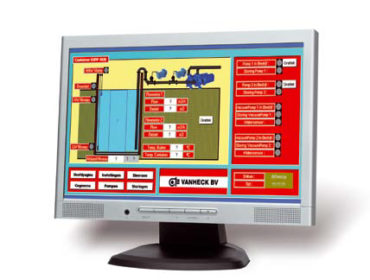Van Heck’s diesel powered pumps can be operated directly via a PLC. A PLC (programmable logic controller) is a control unit that uses measurement data to control the pumps connected to its outputs. The user can program the instrument exactly as he wishes.
PLCs plus frequency converters are already being used to run electrically powered pumps. This system has proven its value extensively in the field: it has been running problem-free in Delft for more than a year. The PLC uses measurements to determine when to switch the pumps on, and if so, at which RPM. In the case of a failure, the PLC will power up the reserve pump. Everything is controlled based on the preset water levels. No frequency converter is needed if a PLC is used to control a series of diesel pumps directly; which means that you also don’t need an generator or reserve generator.
This offers a number of added benefits: the costs and energy consumption are reduced, less space is occupied, the chances of a failure are reduced, and the entire system is simpler and easier to use. The PLC works automatically. In the case of a failure, the failure is logged, transmitted and signalled to make it clear what is needed in case repairs are necessary. The log also specifies whether the reserve pump has been activated. And possibly the most practical aspect is that the PLC can be accessed and adjusted via the Internet.

